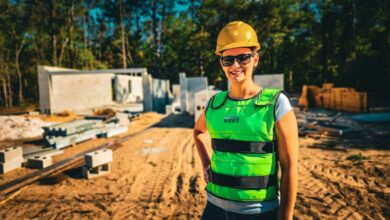The Essential Role of Revenue Per Hour

By Mark Bradley
Hard work and creativity will only get you so far in the intensely competitive and dynamic world of landscaping. Businesses will struggle to keep up without a foundation of smart business practices, particularly understanding and leveraging key metrics. One such metric that’s often undervalued, yet incredibly potent, is revenue per hour (RPH).
RPH is a deceptively simple metric representing the total price of the job, based on your estimate, divided by the number of labor hours. It’s a comprehensive indicator of productivity and efficiency, crucial for any landscape business looking to scale and optimize operations.
I am constantly highlighting RPH whenever I’m out meeting with landscape business owners or conducting webinars, because mastering this key metric is a real game changer. Let’s unpack the significance of RPH and how it can be a catalyst for your business’s growth, especially for those engaged with business management tools and resources.
The opportunity in high-RPH work
Many landscape business owners, like me, started as landscape technicians and learned the importance of high RPH through experience. Understanding RPH unlocks one of the biggest bottlenecks that hinders businesses from maximizing profits. By getting more revenue per hour from existing staff, businesses can grow and scale without having to find, train, supervise and equip additional staff. It has an amazing compounding return compared to hiring additional personnel.
A higher RPH allows for better employee compensation, faster overhead recovery and investment in scaling the business. It enables the acquisition of better equipment and improves day-to-day operations.
By pursuing work with higher RPH, you boost revenue and enhance overhead recovery. Since overhead costs are allocated across labor, equipment and materials, a higher RPH means more overhead is covered, leading to increased profitability. Finding spaces in your existing business to maximize RPH is achievable through understanding a couple of fundamentals.
Real-world impact and growth
Consider a company with 10 employees working 15,000 job hours annually. With an RPH of $73, this translates to a gross revenue of $1,095,000. Assuming a 40% gross profit and 30% overhead, this leaves a healthy 10% net profit. But where should this hypothetical company look to increase that RPH number?
It starts with effectively packaging services. Set competitive base pricing while being sure to include additional chargeable options, such as disposal fees, mulching, fertilization and weed control. Leading with a low base fee while incorporating mandatory or optional add-ons for additional services ensures a larger invoice and satisfied customers.
Don’t forget to adjust pricing and packaging across various services, whether it’s installation, snow removal, landscaping, irrigation or tree work — it can significantly impact RPH.
Promoting and prioritizing installation is another great way to increase RPH. Jobs with more materials, as well as more – or more expensive – equipment will yield a higher RPH than simple upkeep and maintenance.
Finally, make sure you are educating your sales team and crews on this important metric. Ensure they are aware of how to maximize RPH through package add-ons, as well as projects with more equipment and materials. Create incentive plans for your staff, which will encourage them to get the most out of every job and boost overall RPH.
Revenue per Hour is not just a metric; it’s a strategic tool that, when understood and applied effectively, can unlock the full potential of a landscape business. For those engaged with business management tools and resources, integrating RPH into your business strategy can lead to sustainable growth and profitability. It’s all about finding the right balance between pricing, packaging and operational efficiency to exceed your business goals.
Mark Bradley is CEO and founder of Landscape Management Network, a business management software firm that helped him scale his company, TBG Landscape, from backyard business into one of the Top 100 landscape contractors in North America. Bradley is an advocate for bettering the landscape industry through a series of webinars and in-person sessions. Previous sessions can be found on LMN’s website, and you can find more information on registering for upcoming sessions at https://golmn.com/webinars/mastermind-weekly-series-live-webinar-signup.




